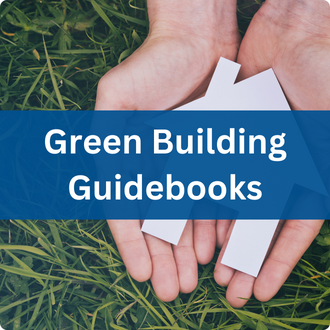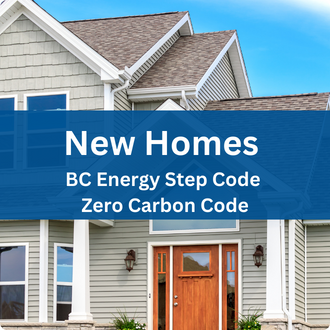Resilient Homes
Resilient Homes includes homes that not only withstand the challenges of today but are prepared for future climate change and also contribute to a sustainable future. Whether you're building a new home or looking to enhance the resilience of your existing one, information on this page will provide you with the knowledge, resources, and support needed to make your home more durable, energy-efficient, and climate-resilient. Learn how to protect your family and your investment:
Past Work
-
Green Bylaw Amendments
-
What is this about?
In 2010, the Regional District of Nanaimo completed a study on Overcoming Barriers to Green Buildings in the RDN, which provided recommendations on how to address potential regulatory hindrances to green buildings in the region. In 2014, the RDN reviewed the current land use bylaws and regulations to identify potential barriers to green building features, systems and technologies, and to propose regulatory changes.
The RDN hosted three Publication Information Meetings on September 16, 17 and 18, 2014 to introduce the proposed changes to "Regional District of Nanaimo Land Use and Subdivision Bylaw No. 500, 1987" and "Regional District of Nanaimo Electoral Area 'F' Zoning and Subdivision Bylaw No. 1285, 2002", which are intended to remove potential regulatory barriers to green building features and technologies within Electoral Areas A, C, E, F, G, and H.
The proposed amendments (Amendment Bylaws No. 500.396 and No. 1285.22) received first and second reading at the Regular Board meeting held on October 28, 2014. The staff report to the Board and summaries of minutes of the Public Information Meetings can be found on this page under Reports and References below. A public hearing for the proposed bylaw amendments was held on Thursday, January 15, 2015 in the Regional District of Nanaimo Administration Building.
At the regular Board Meeting held on February 24, 2015, the proposed amendments were adopted and became effective immediately.
What are the changes?
Changes to Zoning Bylaw 500 (Electoral Areas A, C, E, G and H)
1) Allow rooftop solar energy systems to exceed the maximum permitted building height by 0.6 m.
In all Electoral Areas, except Electoral Area 'F', allowing solar energy systems to extend 0.6 m beyond the maximum permitted height will ensure that such systems can be built on virtually any building, including existing buildings already at the maximum permitted height. On smaller parcels (less than 5,000 m2), this height exemption is limited to 50% of the width of the roof and the system must be affixed to a roof with a pitch not exceeding 3:12. For larger parcels, there are no roof coverage limits. This change accommodates more solar energy systems while protecting views and aesthetic considerations.2) Allow one micro wind turbine system per parcel (1kW capacity or less) up to twice the maximum permitted building height with a minimum setback equal to the height of the system.
Allowing micro wind turbine systems to exceed the maximum permitted height may enable systems to access adequate wind resources. One over-height micro wind turbine system would be permitted per parcel. A minimum setback from all property lines equal to the height of the system would be required, as well as a minimum 60 m setback from eagle and heron nesting trees. These setbacks are intended to minimize noise and other impacts on adjacent properties, and reduce potential risks to biodiversity.3) Amend the definition of floor area to allow thicker insulation without restricting livable floor area.
The new definition of floor area will measure floor area from the interior surface of perimeter walls and exclude all areas under roof overhangs. Excluding wall thickness from floor area will avoid calculating walls as livable floor area. Excluding overhangs from floor area will remove a barrier to passive solar design features that provide shade during the summer months.
Changes to Zoning Bylaw 1285 (Electoral Area F only)1) Allow rooftop solar energy systems to exceed the highest point of the roof by 1.0 m.
In Electoral Area 'F' only, allowing solar energy systems to extend 1.0 m beyond the highest point of the roof will ensure that such systems can be built on virtually any building, including existing buildings already at the maximum permitted height. On smaller parcels (less than 5,000 m2), this height exemption is limited to 50% of the width of the roof. For larger parcels, there are no roof coverage limits. This change accommodates more solar energy systems while protecting views and aesthetic considerations.2) Allow one micro wind turbine system per parcel (1kW capacity or less) up to twice the maximum permitted building height with a minimum setback equal to the height of the system.
Allowing micro wind turbine systems to exceed the maximum permitted height may enable systems to access adequate wind resources. One over-height micro wind turbine system would be permitted per parcel. A minimum setback from all property lines equal to the height of the system would be required, as well as a minimum 60 m setback from eagle and heron nesting trees. These setbacks are intended to minimize noise and other impacts on adjacent properties, and reduce potential risks to biodiversity.3) Amend the definition of floor area to allow thicker insulation without restricting livable floor area.
The new definition of floor area will measure floor area from the interior surface of perimeter walls. Excluding wall thickness from floor area will avoid calculating walls as livable floor area.4) Allow one small wind turbine system per parcel (1kW to 10 kW capacity) with a maximum height of 30m and a minimum setback equal to the height of the system.
Allowing small wind turbines up to a height of 30 m above natural grade may enable systems to access adequate wind resources. One 30 m small wind turbine system would be permitted per parcel. A minimum setback from all property lines equal to the height of the system would be required, as well as a minimum 100 m setback from eagle and heron nesting trees. These setbacks are intended to minimize noise and other impacts on adjacent properties, and reduce potential risks to biodiversity.5) Allow rainwater harvesting structures up to 2 m in height (up to 4,546 L in capacity) within the required minimum setbacks.
Allowing rainwater harvesting structures to encroach into setback areas will make rainwater harvesting more feasible particularly on smaller parcels where land available for such systems is limited as well as in situations where existing homes have already been built near or up to setbacks. Limiting the height to 2 m is intended to minimize aesthetic impacts and obstruction of views.Changes to RDN Board Policy B1.5 - Consideration of Variance Requests
In addition to the bylaw changes, the RDN Board Policy B1.5 "Development Permit Variance Permit, Development Permit with Variance & Floodplain Exemption Application Evaluation Policy", is updated to include consideration of variances relating to green building features, systems and technologies as follows:
In cases where renewable solar or wind energy systems, or rainwater harvesting systems result in a building exceeding maximum height restrictions or encroaching into a setback area, a height variance or setback variance may be considered acceptable.
To encourage more green buildings in the region, one goal of this project is to reduce the need for bylaw variances to accommodate green building features, systems and technologies in new development projects or retrofit situations. The proposed changes to Bylaws 500 and 1285 will reduce regulatory barriers to certain systems; however, further variances may be necessary to address site specific constraints or to ensure a proposed system is viable.
Reports and References
Report - Green Bylaw and Policy Amendments
Presentation Boards from Public Information Meetings held in September 2014
DRAFT Amendment Bylaw 500.396 (Electoral Areas 'A', 'C', 'E', 'G' and 'H')
DRAFT Amendment Bylaw 1285.22 (Electoral Area 'F')
-
RDN Examines Barriers to Green Buildings
-
Overcoming Barriers to Green Building - Final Report
RDN Explores the Benefits of Green Building
High performance green homes and buildings mitigate the environmental impacts of the built environment while reducing the lifecycle costs of buildings and infrastructure. Compact development patterns and a balanced mix of housing types further reduce environmental impacts of the built environment by increasing energy and water efficiency, and create housing opportunities for a broad range of residents.
While these general statements are widely accepted as true, the extent to which green building and compact development patterns actually translate into reductions in the impacts of built form on the environment are rarely quantified. This report examines the type and extent of environmental benefits of promoting green buildings and more compact land use patterns in the RDN.
Benefits of Green Building in the RDN - Final Report
Benefits of Green Building in the RDN - Staff Report
RDN Adopts Green Building Policy for Regional District Facilities
On May 27, 2008, the RDN Board of Directors adopted an innovative new Green Building Policy for RDN facilities. The policy requires that all new RDN facilities be designed using the Integrated Design Process, a collaborative approach to building design that brings together diverse teams of consultants focused on the shared vision of creating high-performance, green buildings for the RDN.
Central to the policy is the recognition that any new facilities built by the RDN should minimize greenhouse gas emissions, and reduce our collective impact on the climate. This means building facilities that are as energy-efficient as possible, with the ultimate goal of making new RDN facilities carbon neutral by 2030. New facilities will also aim to conserve water, reduce waste, provide healthy working environments for employees and treat the surrounding environment with sensitivity.
By adopting this policy, the RDN hopes to increase the number of green buildings in the region, and lead the transition toward greener, more sustainable building in the construction sector. See the links below for more information:
Green Building Policy for Regional District Facilities - Press Release
Green Building Policy for Regional District Facilities - Report and Policy
For additional information on the RDN's Green Building Project, please review the following documents:
Staff report to Board September 2004
Staff report to Board November 2004
Terms of Reference for Green Buildings Project
Staff report to Board July 2005 Green Building Pre-Tour Report - "Green Building Case Studies: Greater Vancouver and Greater Victoria" [4.9MB]
Local Government Green Programs Report (Attachment 1 to October 2005 staff report) [2MB]
October 2005 staff report to Board about local government green building programs
Green Buildings Action Plan February 1, 2007
Please contact the Long Range Planning Department, Development Services, via one of the methods listed below if you have any questions about this project.



